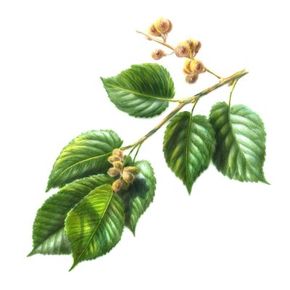Aptly named, this tree is truly slippery -- but it is also elusive in another way. Once used widely by American settlers, many wild slippery elm trees have succumbed to Dutch elm disease, making the trees less plentiful than they once were.
Fortunately, slippery elms have not been lost forever: You can buy slippery elm products in health food stores. It has many uses, including as a popular herb used in herbal remedies to treat inflammations.
Advertisement
Uses for Slippery Elm
The species name fulva means "tawny" or "pale yellow" and refers to the light color of the pleasant-smelling powdered bark. Added to water, the powdered bark becomes a soothing mucilage. The mucilage moistens and soothes, while the herb's tannins are astringent, making slippery elm ideal to soothe inflammations, reduce swelling, and heal damaged tissues.
Mucilage is the most abundant constituent of slippery elm bark, but the tree also contains starch, sugar, calcium, iodine, bromine, amino acids, and traces of manganese and zinc. Many people eat slippery elm to soothe and nourish the body.
Slippery elm helps heal internal mucosal tissues, such as the stomach, vagina, and esophagus. It is often recommended as a restorative herb for people who suffer from prolonged flu, stomach upset, chronic indigestion, and resulting malnutrition. You can use slippery elm to soothe ulcers and stomach inflammation, irritated intestines, vaginal inflammation, sore throat, coughs, and a hoarse voice.
To learn more about treating common medical conditions at home, try the following links:
- For an overview of all of our herbal remedies, go to the main Herbal Remedies page.
- To learn more about treating medical conditions at home, visit our main Home Remedies page.
- One of the best things you can do for your health and well being is to make sure you are getting enough of the vital nutrients your body needs. Visit our Vitamins page to learn more.
This information is solely for informational purposes. IT IS NOT INTENDED TO PROVIDE MEDICAL ADVICE. Neither the Editors of Consumer Guide (R), Publications International, Ltd., the author nor publisher take responsibility for any possible consequences from any treatment, procedure, exercise, dietary modification, action or application of medication which results from reading or following the information contained in this information. The publication of this information does not constitute the practice of medicine, and this information does not replace the advice of your physician or other health care provider. Before undertaking any course of treatment, the reader must seek the advice of their physician or other health care provider.Before engaging in any complementary medical technique, including the use of natural or herbal remedies, you should be aware that many of these techniques have not been evaluated in scientific studies. Use of these remedies in connection with over the counter or prescription medications can cause severe adverse reactions. Often, only limited information is available about their safety and effectiveness. Each state and each discipline has its own rules about whether practitioners are required to be professionally licensed. If you plan to visit a practitioner, it is recommended that you choose one who is licensed by a recognized national organization and who abides by the organization's standards. It is always best to speak with your primary health care provider before starting any new therapeutic technique.
Advertisement
